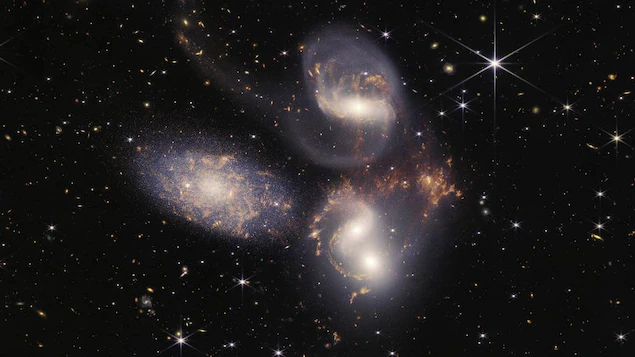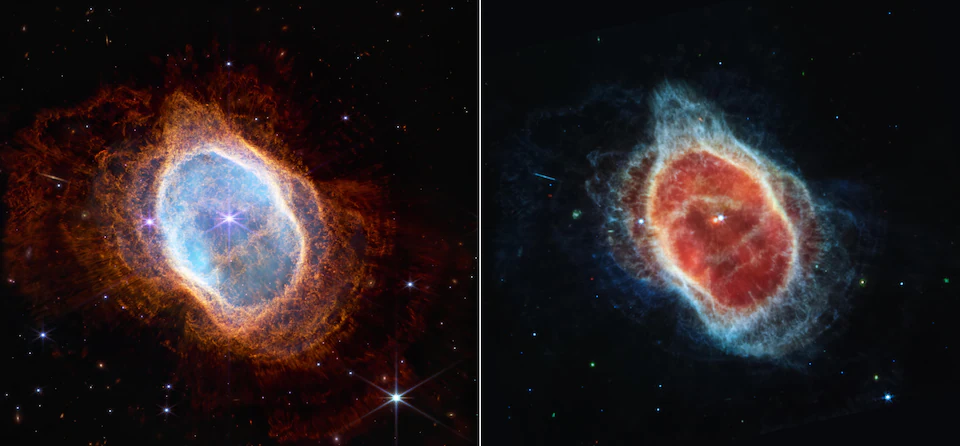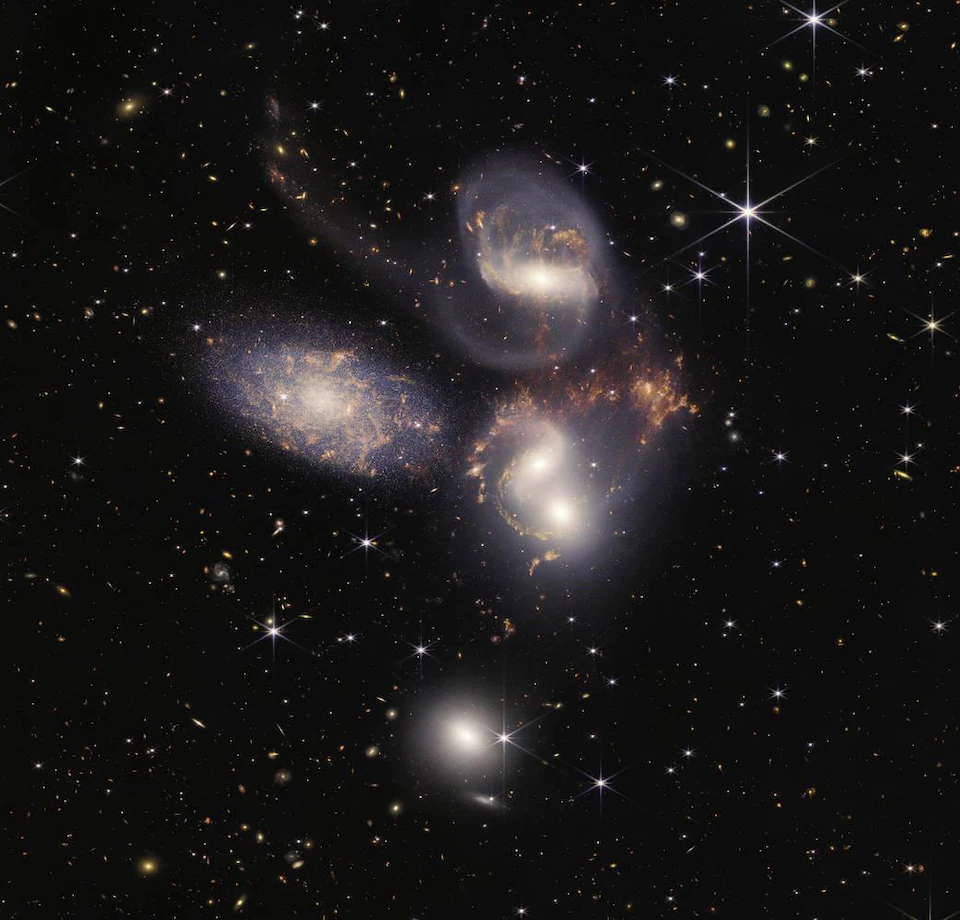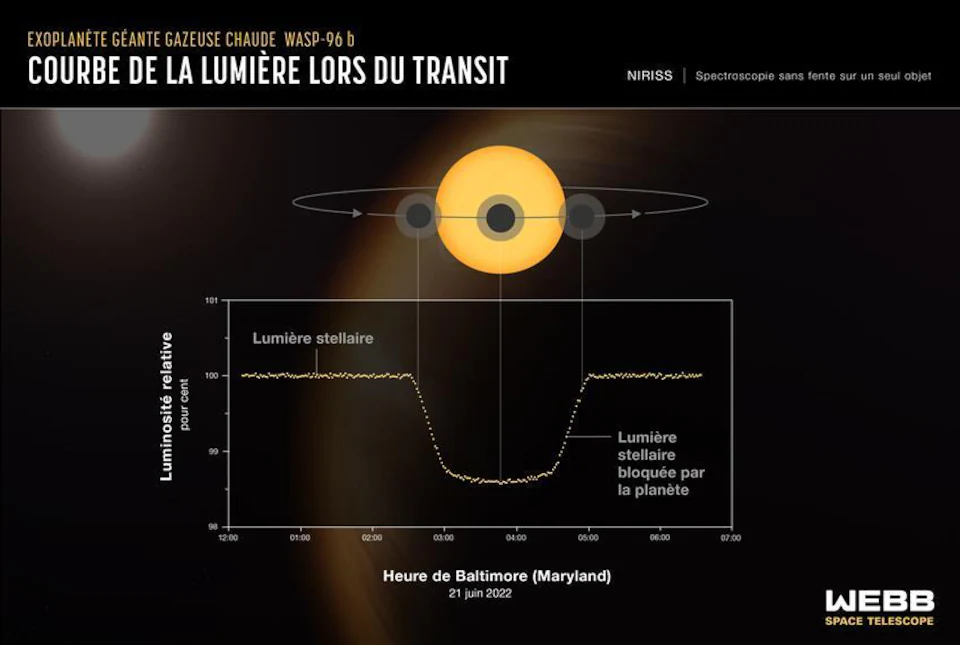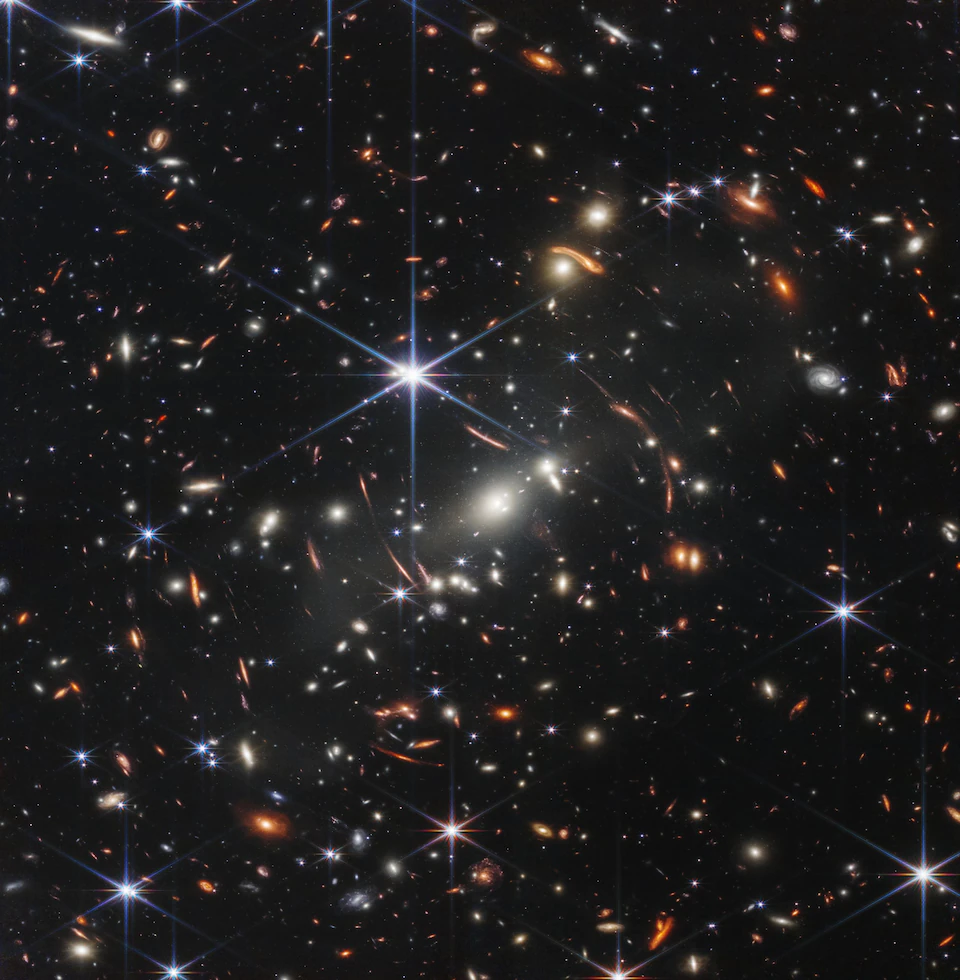The images revealed are those of the Carina and Southern Ring nebulae, as well as the galaxies of Stefan’s Pentagram. The telescope’s first spectroscopic analysis, the exoplanet WASP-96 b, has also been announced.
Professor Rene Doyon of the University of Montreal, one of the designers of the two Canadian instruments aboard the telescope, attended the show at NASA’s Goddard Space Flight Center near Washington.
This is an emotional moment for me and all of our Canadian partners. It’s a bit cliched, but it will open a new chapter in the history of astronomy
said the Quebec astrophysicist who has been involved in the James Webb mission for twenty years.
” I was surprised to see the quality of the images, even though I knew the power of telescope instruments. »
Amazing cosmic cliffs
The nursery of the young star NGC 3324 named after cosmic slopes
is located in the Carina Nebula, about 7,600 light-years from Earth.
This image obtained with the NIRCam near-infrared imager reveals regions of star formation that have not been observed before. It actually shows hundreds of previously unseen stars, but also many galaxies in the background.
Southern Ring Nebula
In this image, the Southern Ring Nebula appears in the near infrared, on the left, and in the mid-infrared on the right. It is possible to observe a huge cloud of expanding gases surrounding a binary system of stars.
This cloud consists of the remains of a white dwarf star like the Sun after it shed its outer layers and burned all its fuel through nuclear fusion.
The brighter star in both images has yet to shed its outer layers.
It is located about 2,000 light-years from Earth and has a diameter of about half a light-year.
Stephan quintet
These five galaxies located about 290 million light-years from Earth make up the first group of compact galaxies discovered in 1877. In fact, only four of these galaxies are in gravitational interaction and form cosmic dance
as they move back and forth near each other frequently.
An image of over 150 million pixels is made up of nearly 1,000 distinct observations. The visual assembly of the five galaxies was performed using the NIRCam near-infrared imager and the MIRI infrared instrument.
WASP-96b . spectrum
The telescope’s first spectroscopic analysis, the exoplanet WASP-96 b, has also been announced.
This technique makes it possible to determine the spectrum of a celestial body that contains information about the chemical and molecular elements of its atmosphere. Canadian NIRISS (Near Infrared Imaging and Spectrum) instrument enabled without ambiguity
The presence of water molecules in the planet’s atmosphere. NIRISS also provided evidence of clouds and fog in the atmosphere of this gas giant planet located about 1,150 light-years from Earth.
WASP-96 b was discovered in 2014. It orbits its star in 3.4 days. Its mass is about half that of Jupiter.
in preview
US President Joe Biden presented the first image, the deepest image of the universe ever taken.
It shows in unparalleled detail galaxies that formed a few hundred million years after the Big Bang, about 13.1 billion years ago.
” Hopefully, in the next few years, we’ll be able to see things 13.5 billion years ago. »
This first Webb deep field was obtained using gravitational lensing technology which, like a giant cosmic magnifying glass, makes it possible to see beyond SMACS 0723 and magnify the galaxies in it.
The cluster appears as it did 4.6 billion years ago, but the lens allows thousands of much older galaxies to be seen behind it, including faint, previously unobserved celestial bodies.
In the coming years, astrophysicists will analyze this image in order to better understand its mass, age, and composition.
The size of this image is roughly the size of watching a grain of sand held at arm’s length.
The scientific mission begins
James Webb Telescope It was launched on December 25th from French Guiana. It is able to look at the universe more than all other telescopes thanks to its huge main mirror and four instruments that receive infrared signals, which allow it to penetrate into dust clouds.
It reached its workplace 1.5 million kilometers from Earth in January, and its scientific structures and instruments have now been deployed, calibrated and tested.
The publication of these results marks the transition between the commissioning phase of the telescope and the start of its science mission.
During the first five months of the mission, James Webb’s instruments will be used exclusively by teams associated with the thirteen initial observational programs selected after a competition based on their scientific interest in astronomy research.
Many Canadian and Quebec scholars participate in these programmes.
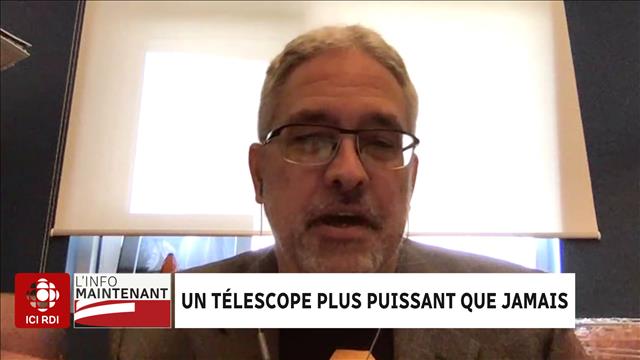
We’re back in these wonderful images taken by the James Webb Telescope with Andre Grandchamp, an astrophysicist at the Rio Tinto Alcan Planetarium.
Canadian contribution
Canada provides two of four critical instruments for the Webb mission: NIRISS (Near Infrared Spectroscopy) and FGS (Precision Orientation Sensor).
NIRISS collected some of the data that was shared at the press conference.
NIRISS has specialized imaging capabilities to study the atmospheres of exoplanets and very distant galaxies
notes Natalie Ollet, a communications scientist for James Webb in Canada and coordinator of the Institute for Exoplanet Research (iREx).
As for the FGS, its work is also at the heart of the announcements and everything that will follow, as it is the guiding detector that allows the telescope to direct an object and make observations steadily and accurately.

“Extreme twitteraholic. Passionate travel nerd. Hardcore zombie trailblazer. Web fanatic. Evil bacon geek.”

